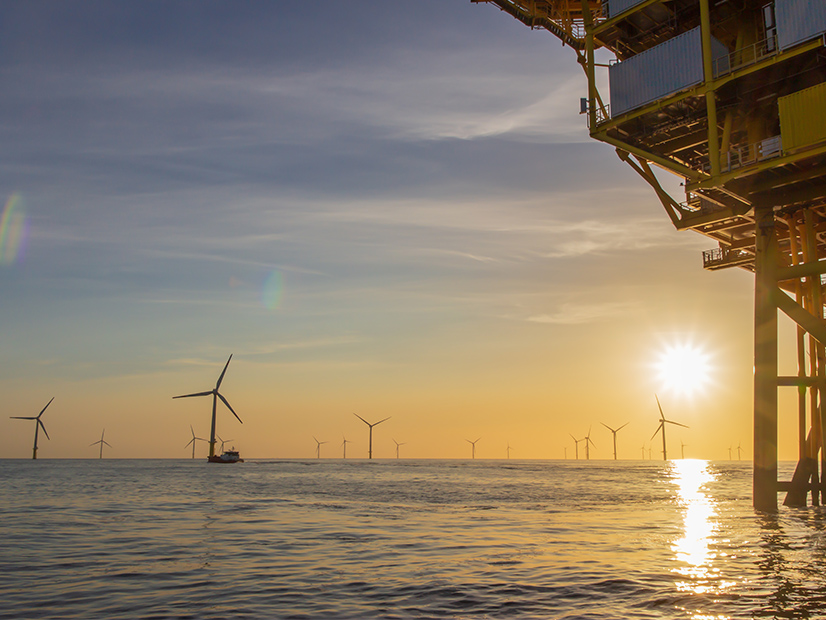The New Jersey Board of Public Utilities (BPU) on June 29 agreed to hear a petition filed by developer Ørsted seeking to override Cape May County officials who it says have not responded to its efforts to secure local approvals for the Ocean Wind 1 offshore wind project.
Ørsted is seeking approval to run an underground transmission line from its turbines to the shoreline at Ocean City to a substation in the next town, including through land owned by Cape May County. The developer is seeking to secure permission under a new law passed by the legislature last year and enacted in July that gives the BPU authority to override local government officials in land-use questions concerning offshore wind projects if the board finds that the land is “reasonably necessary” for the project’s construction.
The five-member BPU voted unanimously at its monthly meeting to take up the case and assigned board President Joseph Fiordaliso as the hearing officer.
The Ocean Wind 1 petition follows a similar petition filed by Ørsted in March seeking to override officials in Ocean City who oppose the project. The BPU on June 24 held closing arguments in that case. (See NJ City Calls for Delay to Ocean Wind 1.)
The Ocean City case is the first test of the new law, which was enacted in July, and both cases could provide a roadmap for the difficulties facing other projects in the future. The 1,100-MW Ocean Wind project, which was approved in 2019, was the first of three approved offshore wind farms by the state so far. The BPU has also approved the 1,148-MW Ocean Wind 2 and the 1,510-MW Atlantic Shores, and the state expects to hold three more solicitations for a total of 7,500 MW by 2035.
Obtaining Consent
Ørsted’s latest petition states that in order to advance, the project needs to obtain “certain easements” across property owned by Cape May County and “certain consents” from the county. The project needs a temporary 18-month easement and a 30-foot wide permanent easement, both in Ocean City, the developer’s May 20 petition says.
The project also needs the county’s consent as part of the application for 10 permits needed for the project to advance, the petition says.
Ocean Wind “must have the legal authority and/or consent from Cape May County to perform the project activities on the properties owned by the county,” it says. “Cape May County has been unwilling to provide consents needed for any [New Jersey Department of Environmental Protection] permit applications.”
In a June 7 motion asking the BPU to decline and dismiss the petition, Cape May County argued that Ørsted’s move was premature. Although the new law requires the offshore wind project to make its request to the local government and then wait 90 days for a response before filing any petition, the developer had made only “vague, ambiguous and expressly conditional” requests that don’t meet the definition of “request” under the law, the county said.
Ocean Wind 1 “has not supplied all required information and documents in order for the county to provide consent,” the county also said.
Michael Donohue, the attorney for Cape May County, told RTO Insider that the county is “not against wind-generated electricity.”
“Living in one of the last nearly pristine environments in the state, the people of Cape May County are all extraordinarily engaged when it comes to preserving that environment and its flora and fauna,” he said. “The county is not attempting to delay project approvals.
“The brand new statute in question seeks to transfer the authority of the five, duly elected County Commissioners to the unelected members of the BPU,” he said. “We think it is important that any process that leads to such a result be fair, impartial and unbiased and that it should afford the people of the County of Cape May substantial due process.”
Responding to Cape May’s argument in a June 20 brief, Ørsted said it had been in discussion with the county for two and a half years, and the county had no basis for claiming that the request lacked specificity. The country’s motion to dismiss was “little more than an attempt to delay” the project, the company said.
“The county’s arguments and certification alleging the inadequacy of the [petition] rest not on objective facts, but rather on subjective conclusions that the notice was inadequate,” Ørsted said. The developer added that the law does not require it to “request” the environmental permitting consents, only to “consult” with the county, which Ørsted did in “various meetings and correspondence with the county.”
PSE&G Infrastructure Spending
The board also approved Public Service Electric and Gas’ (NYSE:PEG) Infrastructure Advancement Program (IAP), in which the utility will spend $511 million over four years to replace aging electric equipment, upgrade substations and install electric vehicle infrastructure.
The last of those will “begin preparing the grid for the rapid transition to EVs and enable a greater blend of renewable energy resources by increasing the reliability of the state’s electric grid down to the street and neighborhood level,” PSE&G said in a press release.
The proposal will cost the typical residential electric and gas customer about $1.50/month in 2026, PSE&G said.
PSE&G initially petitioned for an expenditure of $850 million, starting in 2022 and concluding in 2026, with about 85% of the funds to go to electric projects and the remainder for gas projects, the BPU order approving the program said.


